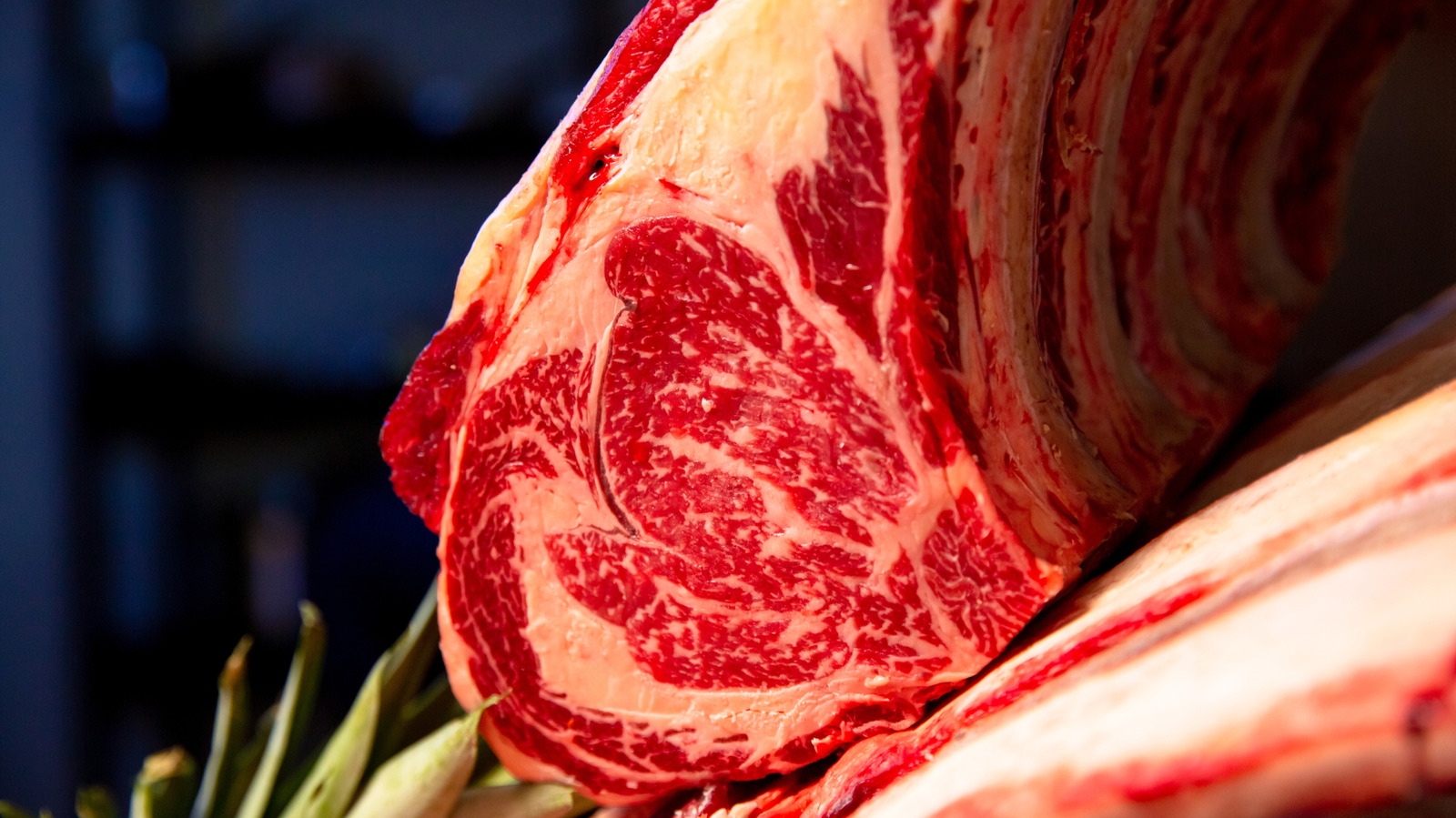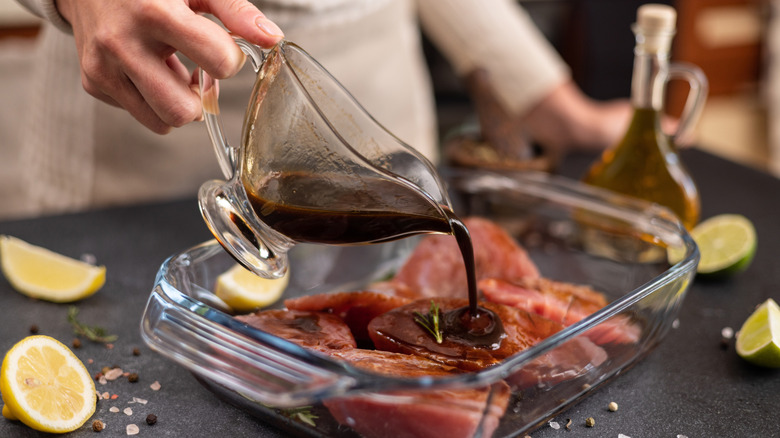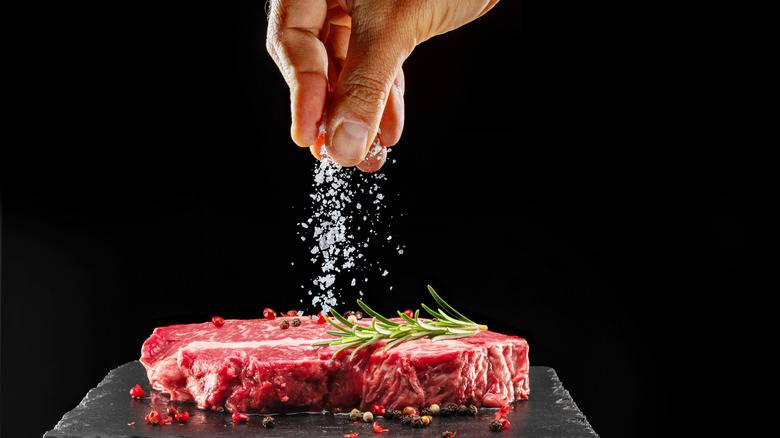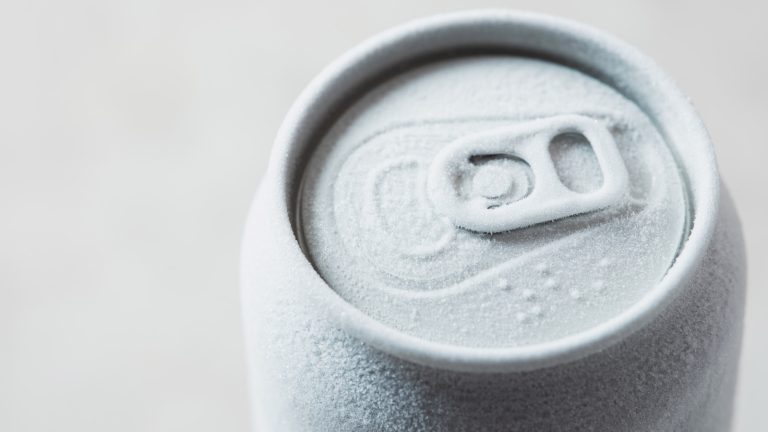Ribeye is the king of steaks. A favorite of chefs and steak enthusiasts the world over, it’s renowned for a tenderness and deeply savory flavor profile that’s tough to match. You might think that to lock in — or even enhance — that natural flavor, and tenderize the meat, you should slap a marinade on your ribeye before grilling it to perfection. But you’d be wrong. In fact, marinating a beautiful ribeye steak would be a critical mistake that could risk ruining it rather than improving it.
Marinades are wonderful things, that we can’t deny. They can be incredibly useful when it comes to making proteins (be that fish, chicken, pork chops, and the like) more forgiving as far as overcooking is concerned, tenderizing them and releasing flavor. But a really great cut like a ribeye simply doesn’t need one. Ribeye steaks are famous for their abundance of intramuscular fat, which you might know as marbling. This fat, essentially, does the job that a marinade would, rendering as the meat cooks, keeping it juicy and tender while imparting a richness that you can only get from beef.
The ribeye is so naturally soft compared to other cuts like chuck (an inexpensive, yet still flavorful alternative) because the muscle which it contains, the longissimus dorsi, is used comparatively less by the cow. As such, it’s less dense and more tender. Because of the muscle’s structure those juices flow easily throughout the meat as it cooks, keeping it evenly tender.
Marinades can actually spoil the texture of a ribeye steak
What if you want to marinate your steak anyway? Would you just end up with an even more tender, restaurant worthy ribeye, bursting with flavor? Well, in short, not really. In fact, using a marinade on an already heavily marbled cut like a ribeye might risk ruining the texture of the steak entirely, leaving you with an overly soft, mushy feel — and nobody wants a mushy steak. The acids in a good steak marinade work to denature proteins, making them less likely to seize up while cooking and in turn softening tough, lean meat. But with a thick cut, well marbled steak like a ribeye, those acids are unable to penetrate very far beyond the surface of the meat, instead just sitting on the surface and over-tenderizing it. The texture of a ribeye is brilliant as is — there’s no need to mess with it.
Marinating your ribeye might also stop you from getting that golden brown crust that’s something of a holy grail for many an amateur steak chef. As you might already know, the Maillard reaction (the process that leads to a crust forming) is best achieved when the surface of whatever you’re cooking is dry. When meat is marinated, it absorbs moisture — meaning that more of it would have to evaporate in order to form a crust, which means more time on the heat — as such, you risk either not getting the crust you want, or worse, over cooking your steak.
How to enhance your ribeye without using a marinade
Though your ribeye is delicious (and tender) all on its own, there are still ways that you can enhance its flavor and texture without risking spoiling it with a marinade. One such trick is so simple, you probably hadn’t considered it: Season your steak properly. You might think you’re putting enough salt on your steak, but chances are, you’re not. When you sear it, especially in a pan (as opposed to cooking it to perfection over a grill) a large proportion of the seasoning you add to your steak immediately beforehand is just going to wash off as it cooks. Salt itself goes surprisingly far when it comes to tenderizing steak and is essential to bring out its natural beefy flavor. To make sure that the salt penetrates deeply into the ribeye, season your steak well in advance of cooking, with more salt than you would think necessary.
To take things a step further, consider a dry brine, which involves seasoning your steak up to 48 hours before you cook it and refrigerating it uncovered. The salt and cool air will draw moisture out of the meat, resulting in a concentrated, salty liquid that is subsequently reabsorbed back into the steak. This process breaks down proteins in the meat, much like a marinade would — but because you’re not adding any extra moisture to the party (rather, you’re repurposing the meat’s own juices) you won’t risk spoiling the texture or giving up a great crust in favor of more tender meat.







